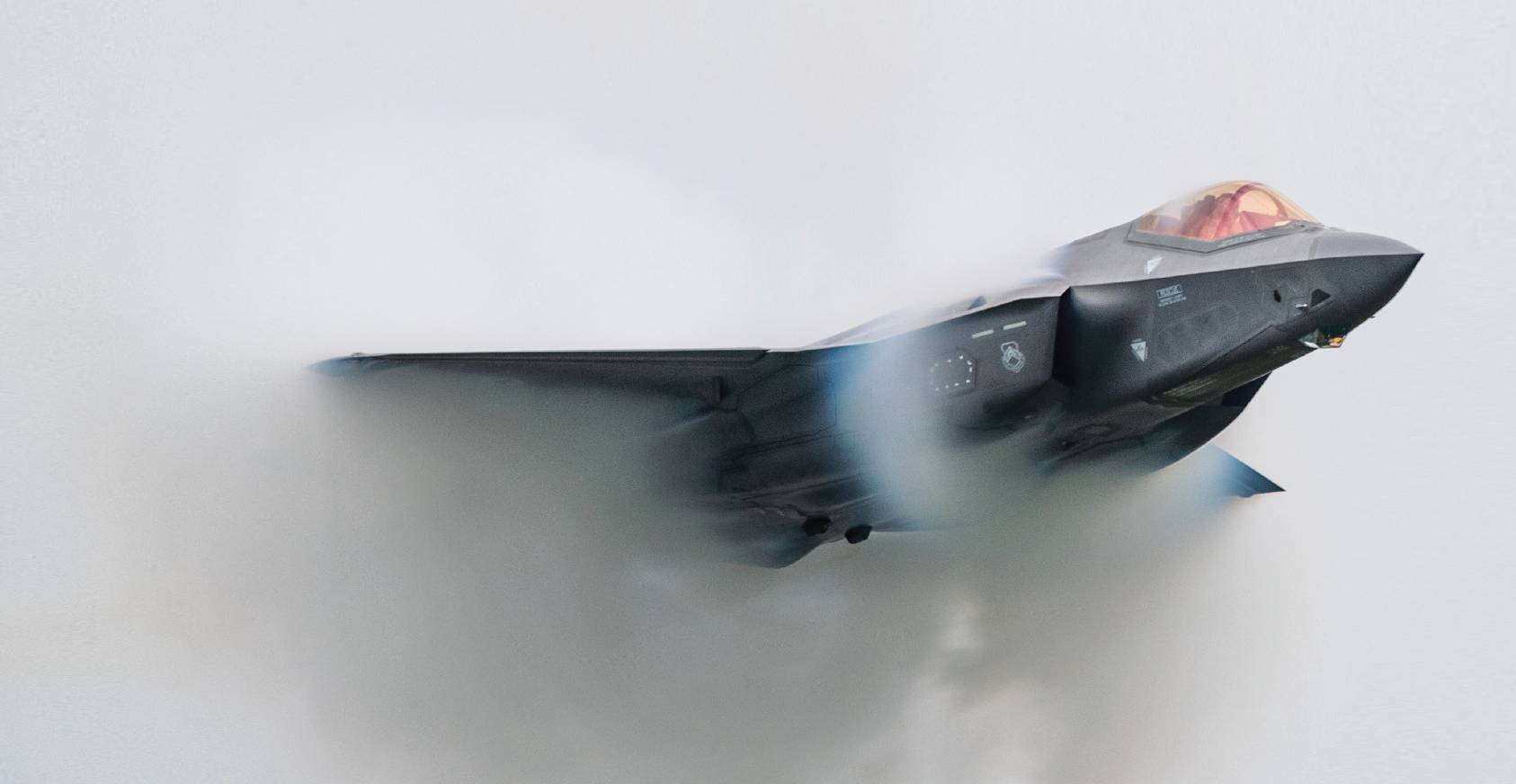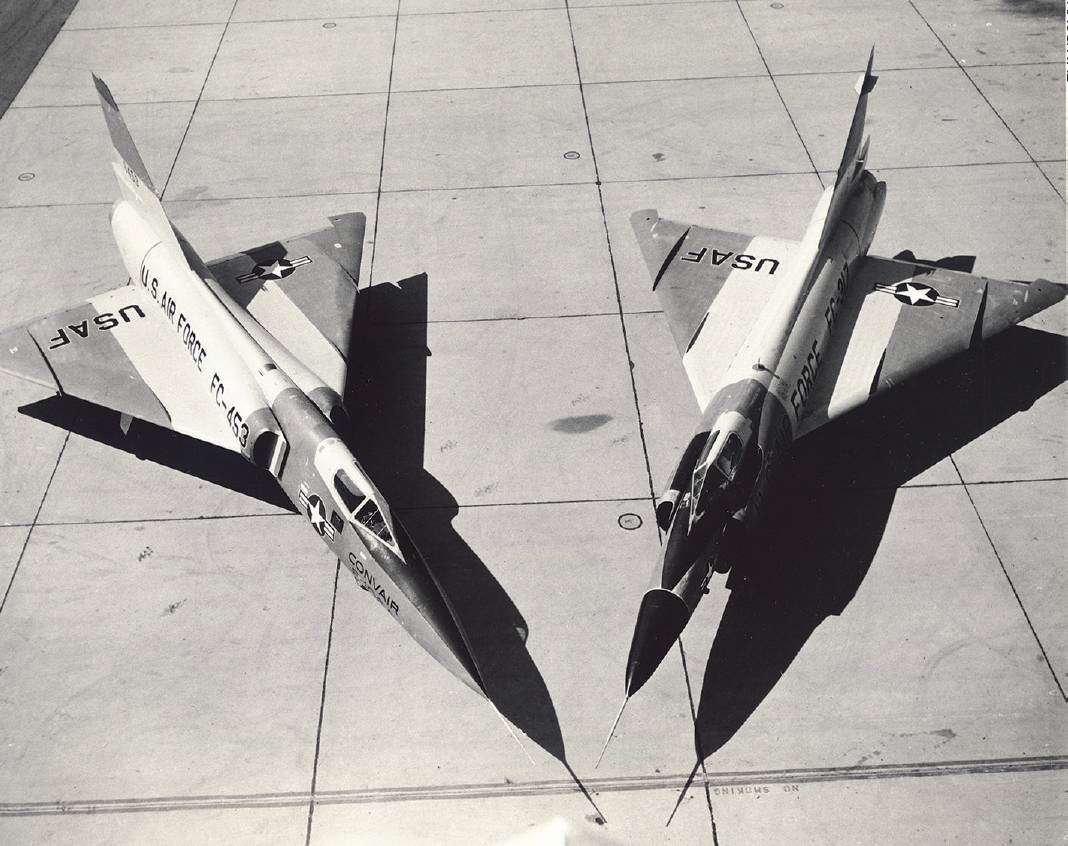DEFENCE US fighter procurement
21st Century Boyd’s
The USAF has revealed it is aiming to go back to a 1950’s Century-style rapid development and fielding of fighters – with a goal of placing a new type into service in just five years. Can this radically rapid approach to acquisition really work? Dr MICHAEL J PRYCE assesses the feasibility of crash fighter development programmes in the 21st century.

On 2 October 2019 the United States Air Force opened its new Program Executive Office for Advanced Aircraft at Wright-Patterson Air Force Base. The office is set to implement the vision of the head of the United States Air Force’s acquisition programmes, Dr Will Roper, who has set out a dramatic vision for future fighter aircraft development. Instead of spending decades developing the ‘100%’ solution, the service will work with industry to deliver a new fighter every five years. In remarks that echoed the story of the development of the F-16 almost half a century ago, Roper aims to follow a ‘fly before you buy’ prototyping approach. Speaking after his appearance at the recent Air Force Association event Roper said in an interview:
“When you can prototype something instead of studying it for years you get out of the starting gates faster, you learn quicker, you retire risk faster. If your concept is flawed, you get rid of it. There is something about contact with industry and building metal early that leads to common sense in the acquisition program.”
A digital Century Series

Faster, better, cheaper are long-held aspirations in developing future fighters. Oddly, however, Roper cites the expensive, flawed Century Series of 1950’s fighters as the model to emulate but with added modern, digital technology, it is hoped to avoid their pitfalls. His so called ‘Digital Century Series’ looks to avoid the mistakes of the past by using modern computer hardware and software. Perhaps, like Marty McFly, correcting the mistakes of the past may lead to a better future. Then again, Roper’s new approach may repeat, at greater cost and slower speed, the failings of the original Century Series fighters.
Developed as part of the transformation of combat aircraft development led by General Bernard Schriever, later the ‘father’ of the strategic ballistic missile program, the Century Series embodied the then novel concept of the ‘weapons system’. Integrating electronics with ever faster aircraft speeds and new types of missiles, the marvels of modern weapons system management and technology were meant to create a new generation of specialised, advanced fighters. Intended to both counter the developing Soviet threat and to displace old, worn-out aircraft from the USAF inventory, what resulted was an air force that featured an expensive morass of maintenance, missed operational performance and inappropriate technology-driven tactics that led to many American failings in the skies of Vietnam.
Schriever had hoped that new aircraft would replace old ones quickly, so the high maintenance costs of obsolete aircraft would not be an issue. Ballooning development costs and timescales soon put paid to that. Force structures became torn between the need for numbers, reliability and quality that proved impossible to reconcile. Despite their operational and cost failures, the USAF was stuck with the Century Series for longer than expected.
Cutting through the Gordian Knot

Having stayed with complex, high-end aircraft for the air superiority role in the shape of the F-15 and F-22, designed to ensure air dominance as a prerequisite for all other missions, the simpler F-16 was the sword intended to cut through the Gordian Knot begotten by Schriever to increase the size of the combat fleet. With technology displaced by tactics and piloting skill, a move led by John Boyd’s ‘Fighter Mafia’, a simpler, cheaper, more reliable aeroplane was seen as the answer.
The speed of the F-16 programme’s execution and fielding makes it a better analogy for Roper’s ambition to focus on time as the key metric in acquisition than the Century Series. However, the F-16, despite its fame as a dogfighter, has never been used by the USAF for air dominance. Are they now willing to accept a simpler, perhaps more vulnerable aircraft in that role? or to change their position on minimal losses in combat, perhaps sacrificing fleets of pilotless ‘Loyal Wingmen’ instead? The search for increased combat mass may simply result in expensive decoys to support inadequate numbers of piloted aircraft. No air combat ‘drone’ has yet entered service: the complexities of transonic airflow are not amenable to easy automation.
It could be argued that the F-16’s successor, the F-35, has had low cost and simplicity designed out of it by adopting some of the complex technologies of the F-22. Whatever the benefits in terms of mission performance, this does seem to result in much lower levels of mission readiness. Will Roper has professed surprise at discovering that 70% of the USAF’s budget is spent on maintenance but that is the result of both complex technologies and an over-simplification of the approach taken to procure them.
Affordable stealth

The Joint Strike Fighter programme was intended to produce low-cost, high-quality aircraft by using a single key metric, cost, to guide decisions. By allowing industry to use its own approaches and standards in development and design it was also hoped to allow new design freedoms for contractors. This did not work. In the case of the F-35, vast costs were baked in instead: one key 1990’s decision on the flight control system may have added over $100bn in through-life costs.
This was brought about by replacing design judgements made by experienced people in the services and industry in favour of explicit, if simple, processes. Commercial logic was supposed to overcome technical challenges. Will Roper hopes to bring new, more commercial approaches and firms into combat aircraft acquisition but this again is a return to old approaches that did not work as planned.
The reasons for these failures have not gone away: indeed Roper’s approach may amplify them. Digital design tools and data science were used in the Joint Strike Fighter programme and have been pursued by DARPA in its META initiative of a decade ago. META slunk off into the shadows without slashing development costs or timescales. Faith in digital answers to hard technical and operational matters, as well as the inevitable politics of defence spending, has yet to deliver a major breakthrough in fighter development. Many of the aerodynamic and structural challenges are not amenable to simple, digital analysis. They need people to make informed, uncertain decisions, not algorithms to arrive at a notional optimum.
Since Schriever’s time development has been run by a separate part of the Air Force from maintenance. Huge maintenance costs have been the result. Roper’s second new idea, alongside his new advanced aircraft office, is to save maintenance money to release funds for development.
This is laudable but his mechanism for doing so, a new, but still separate, logistics organisation that aims to harness innovation, may not be the answer. Sound, integrated design that understands maintenance requires all those concerned with making and operating fighters to be in one room. Such an approach will need a more nuanced understanding of the past, of technical possibilities and of the consequences of allowing programmes to deliberately fail, as Roper appears to want to.
The century may have changed, but the complexities of designing fighter aircraft have not. Experience counts and is easily lost or diluted.
Summary
With companies and nations across the globe looking at new fighters, many will watch the American experiment with interest. If it is finally possible, after 60 years of failure, to translate approaches that work in the development of digital systems into the less predictable environment of aircraft design, then the US will have changed the game. If they drop the ball, however, there may be others waiting in the wings to pick it up and run in a different direction. Roper’s vision may lead to something new, or it may end up like Schriever’s and Boyd’s: broken by the operational and political realities of designing fighters, still one of the most complex technical objects that humans create.



